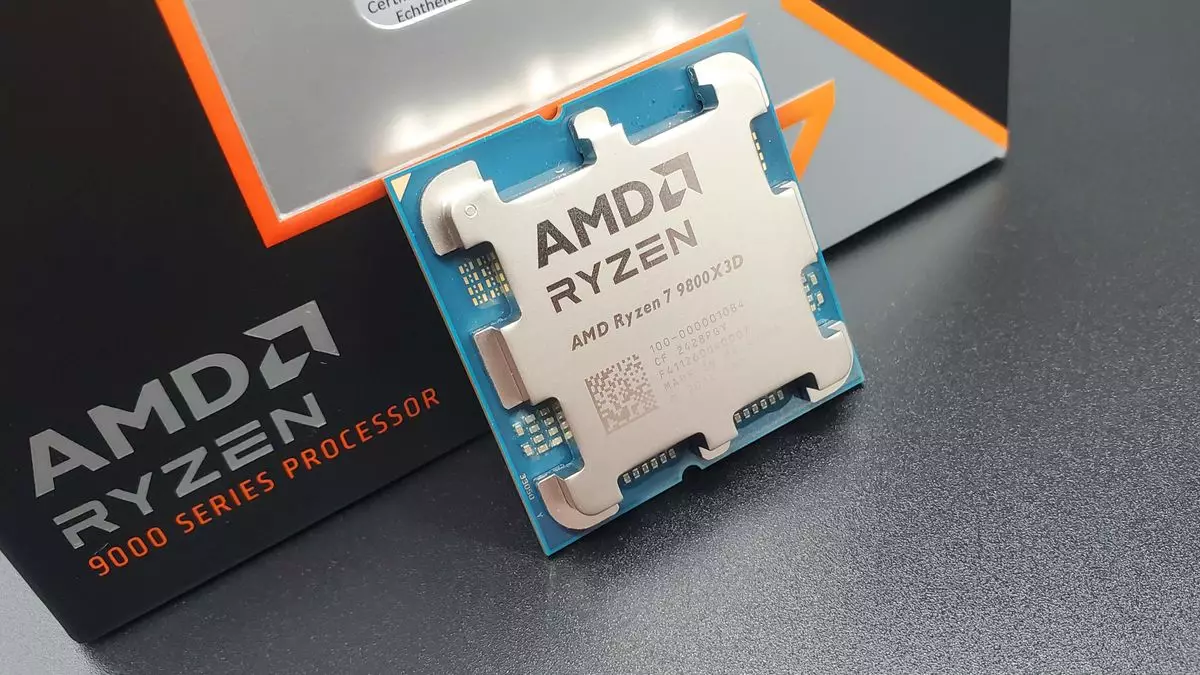The technology sector continuously evolves, with major players consistently competing to produce advanced hardware. A critical focus remains on the Central Processing Unit (CPU) and Graphics Processing Unit (GPU) arenas. Recently, AMD and Intel both unveiled new CPU lineups, demonstrating their commitment to innovation while highlighting the contrasts in their respective strategies and market reception. This article delves into the competitive framework that defines AMD and Intel, emphasizing market trends, product performance, and consumer access.
AMD has historically evolved by strategically positioning its products, and recent developments underscore this trajectory. The company’s latest 9000-series, including the Ryzen 7 9800X3D, has garnered significant attention, particularly during the holiday sales period. CEO Dr. Lisa Su proclaimed unprecedented demand for AMD’s gaming CPUs, asserting that the sales figures reflected the highest sell-out rates observed in years. Such assertions indicate that consumers are increasingly leaning toward AMD offerings, driven by performance across gaming platforms and productivity tasks.
However, while soaring sales figures may initially signify robust demand, they can also mask supply chain challenges. The scarcity of Ryzen 7 9800X3D processors has raised eyebrows, as availability falters against an aggressive launch strategy. A phenomenon commonly described as a “paper launch,” where products are unveiled with insufficient stock for consumer demand, remains a concern. Still, AMD appears to be navigating this terrain well, with Dr. Su explaining ongoing efforts to balance supply with the demand that has surged since the release of the new CPUs.
In stark contrast, the latest offerings from Intel’s Core Ultra 200S lineup have been described as tepid. Critical assessments suggest that this new line hasn’t significantly advanced the competitive edge typical of Intel products. Compounding this problem are the instability issues associated with their earlier 13th and 14th-generation CPUs, which have muddied consumers’ perceptions. As AMD captures the gaming market, the hesitation surrounding Intel’s recent chips raises questions about their strategy to maintain relevance amidst rising competition.
Even with the recently introduced Core Ultra 200S mobile processors, Intel is struggling to compete in the gaming sector, where AMD’s capabilities—in both desktop and mobile formats—exceed expectations. With benchmarks indicating AMD as a superior performer, it stands to reason that consumer allegiance may continue to shift unless Intel can significantly better its offerings.
Despite positive momentum on the CPU front, AMD’s fortunes concerning its GPU division present a more complex picture. Their graphics card sales have unfortunately lagged, leading to speculation that the company may be nearing a generational shift. Market analysts eagerly anticipate the response of new GPU models, such as the RX 9070 and RX 9070 XT, which could dictate whether AMD can reclaim its position in this vital segment.
AMD’s recent struggles stand in stark contrast to its CPU success. Features touted as game-changers have not resonated as robustly in the graphics arena, indicating that overall performance is crucial for consumer satisfaction. The balance of CPU and GPU innovation will ultimately dictate how both AMD and Intel satisfy the burgeoning gaming market—especially as performance demands evolve and increase.
Mobile Market Competitiveness: A Close Contest
Despite its successes in the desktop arena, AMD isn’t entirely relinquishing its stake in mobile processor technology. The release of the AI 300 ‘Strix Point’ processors has seen fruitful adoption in various devices, including innovative handheld gaming consoles. The versatility of such processors signals AMD’s commitment to diversifying and boosting its portfolio across segments.
However, Intel is not without its own mobile successes. The Core Ultra 200V ‘Lunar Lake’ processors show promise, particularly concerning efficiency, fostering competitive tension in the mobile marketplace. Nevertheless, Intel’s offerings seem to lack the graphical capability that AMD provides, particularly for intensive gaming applications. This binary split in capabilities demonstrates both companies’ strategies to secure market share in a highly competitive landscape where consumer expectations are constantly evolving.
As both AMD and Intel navigate this competitive landscape, the coming months will be critical. AMD must meet the fast tempo of consumer demand with adequate supply in its CPU market while aiming to revitalize its GPU lineup. Meanwhile, Intel is positioned at a pivotal junction, needing to reassess its strategies to robustly re-enter and disrupt the CPU and GPU segments.
In a landscape driven by rapid technological evolution, which company ultimately prevails will depend not solely on innovation but on the ability to adapt to new market realities while addressing consumer needs effectively. The ensuing battles in the processor cage will shape the future of gaming and computing, inviting both excitement and scrutiny from all corners of the tech community.

